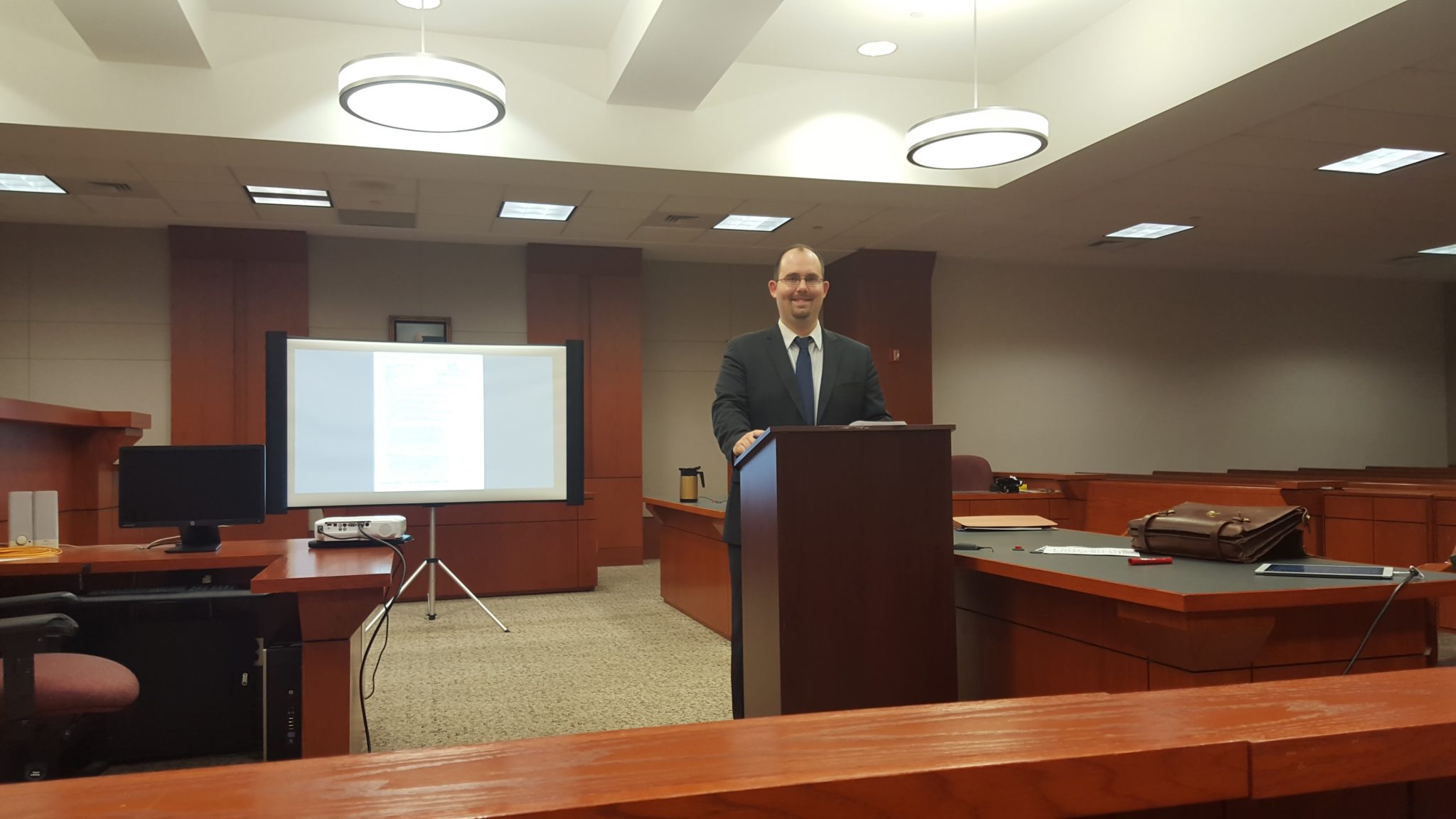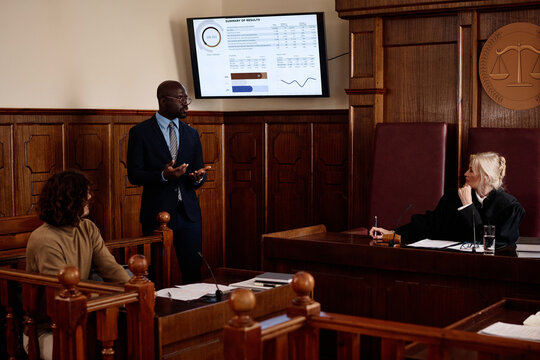Why Your Following Case Requirements a Solid Trial Presentation: Insights and Techniques for Attorneys
Why Your Following Case Requirements a Solid Trial Presentation: Insights and Techniques for Attorneys
Blog Article
Browsing the Complexities of Trial Presentations: Tips for Seamless Distribution and Engaging Debates
In the realm of legal procedures, the art of test presentation stands as an important factor of success. As lawyers browse the complex web of court dynamics, the capacity to flawlessly deliver debates and evidence while astounding the court's interest comes to be extremely important. The intricacies fundamental in trial discussions require a delicate balance of method, skill, and skill. By sharpening techniques that make certain a refined delivery and crafting engaging arguments that reverberate with the target market, lawful professionals can considerably improve their advocacy. In a world where persuasion preponderates, understanding the ins and outs of test discussions is not just an option however a necessity for those seeking to prevail in the courtroom.

Recognizing Test Goals
To efficiently navigate a trial, it is vital to have a clear understanding of the goals that require to be achieved. Before entering the court, legal teams should specify their objectives and preferred results. These goals function as assisting principles throughout the test, forming methods and affecting decision-making procedures.
Recognizing trial objectives involves a thorough analysis of the instance, legal criteria, and the client's ideal interests. Trial Presentations. It calls for a precise exam of the truths, identifying key problems, and preparing for potential challenges. By setting quantifiable and certain goals, attorneys can tailor their arguments and discussions to straighten with the wanted outcomes
Additionally, a clear grip of trial objectives enables lawful groups to prioritize evidence, witnesses, and lawful disagreements efficiently. It enables the advancement of a systematic narrative that resonates with the discretionary, enhancing the general instance discussion.

Organizing Proof Effectively
Having a clear understanding of trial goals lays the foundation for arranging proof efficiently in legal proceedings - Trial Presentations. By lining up the presentation of evidence with the desired results of the trial, lawful teams can reinforce their disagreements and enhance their persuasiveness. One important element of organizing evidence is categorization. Grouping evidence based on themes or significance to details legal components can assist enhance the discussion and make complex info much more absorbable for the judge or jury.
Another crucial element in organizing evidence properly is developing a rational circulation. Offering proof in a coherent and sequential fashion can aid develop an engaging narrative that supports the legal disagreements being made. In addition, utilizing visual help such as charts, charts, or timelines can even more enhance the company of evidence and aid in clearing up intricate partnerships or series of occasions.
Additionally, making certain that all proof presented is admissible and relevant to the case is vital. Unimportant or inadmissible proof can diminish the stamina of the debate and potentially hurt the reliability of today event. Consequently, a careful review and selection process ought to be undertaken to consist of only the most impactful and lawfully audio proof in the test discussion.
Crafting Convincing Stories
Crafting engaging stories plays a critical role in offering persuasive arguments throughout lawful proceedings. A well-crafted story has the power to mesmerize the audience, stimulate emotions, and eventually sway the choice in favor of the here and now party. When creating a story for a test presentation, it is necessary to establish a clear story that highlights bottom lines and links them in a coherent manner. Begin by describing the facts of the instance in a compelling manner, making certain that the sequence of events is easy to comply with. Present personalities successfully, offering background information that aids the audience understand their motivations and actions. Furthermore, integrating vivid descriptions and interesting language can bring the story to life, making it much more remarkable for the court and jury. By weaving with each other evidence, testimony, and lawful debates right into a convincing and cohesive story, attorneys can efficiently promote for their customers and increase the chance of a desirable end result in the courtroom.
Mastering Aesthetic Help
Reliable use aesthetic aids is key to improving the effect and quality of trial discussions. Aesthetic help, when utilized purposefully, have the power to streamline complex details, strengthen find here key points, and leave a lasting perception on the discretionary. To master visual help in trial presentations, it is important to guarantee that they are clear, concise, and appropriate to the disagreements being made.
When integrating aesthetic help, such as graphes, graphs, photos, or timelines, into a test discussion, it is necessary to keep them visually appealing yet specialist. The visuals should enhance the verbal arguments, supplying a visual depiction of the info being reviewed without overwhelming the target market with unneeded information.
In addition, experimenting the visual help ahead of time is critical to guarantee a smooth distribution during the test. Familiarizing oneself with the content, transitions, and timings of each aesthetic aid can assist maintain the flow of the discussion and prevent technological problems that may arise.
Supplying Impactful Closing Disagreements
An engaging closing disagreement functions as the conclusion of a test discussion, enveloping the core narrative and encouraging the court and jury towards a beneficial decision. To deliver an impactful closing disagreement, it is vital to succinctly wrap up bottom lines, highlight the toughness of your case, and resolve any type of weaknesses in a tactical manner. Begin by describing the major arguments that support your client's setting, stressing why the evidence offered throughout the trial supports your story. It is vital to develop a sense of communication and clearness, directing the court and jury towards the preferred final thought.
Additionally, integrating emotional allure can better strengthen your closing debate. Ultimately, a well-crafted closing debate ought to leave a lasting impact, engaging the court and jury to rule in your client's favor.
Conclusion
Finally, grasping test presentations includes comprehending objectives, organizing evidence, crafting stories, utilizing aesthetic aids, and delivering impactful closing disagreements. By carrying out these approaches efficiently, attorneys can offer their instance effortlessly and make engaging disagreements in the court. It is critical to browse the intricacies of trial discussions with precision and skill to accomplish success in legal process.
By useful site aligning the discussion of proof with the preferred results of the test, legal teams can top article reinforce their arguments and enhance their persuasiveness (Trial Presentations). To master aesthetic aids in test discussions, it is critical to make sure that they are clear, concise, and appropriate to the arguments being made
An engaging closing disagreement serves as the conclusion of a test discussion, enveloping the core narrative and convincing the court and court towards a positive decision. Begin by outlining the primary disagreements that sustain your client's setting, emphasizing why the proof offered throughout the test supports your story.In final thought, grasping trial discussions includes understanding objectives, organizing evidence, crafting narratives, making use of aesthetic aids, and supplying impactful closing disagreements.
Report this page